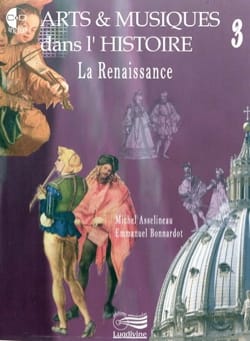The name "Renaissance" applies to the period of renewal in art, literature, philosophy and science that manifests in Europe in the fifteenth and sixteenth centuries. This real upheaval, which affects multiple domains, imposes a new conception of the world whose consequences are still measured today. The book offers us a trip extensively illustrated first in the heart of the Italian quattrocento vector of the "first Renaissance". It will find, closely associated with Florence, the Medici and a whole host of architects, painters of sculptors ...
The exploration continues with the Cinquecento (XVI), this century where art explodes against a backdrop of permanent wars. Dozens of synthetic articles and illustrations about the "High Renaissance" then the "Mannerist" period make us discover the events and artists of the main European countries where history was written. This exploration will be an opportunity to discover the most significant works (several comments are proposed) but also the Humanists, the great conquerors and the major artists who have staked this rich period.
For the "Music" part, Emmanuel Bonnardot brings his expert eye to illustrate this chapter in a relevant way. A very detailed approach of the instruments used at the time as well as suggestions and listening comments (France, Italy, Spain, Germany ...) in both sacred and secular fields, will provide the necessary auditory complement.
On the program: This New Year's Day (Guillaume Dufay), Wood Nymphs (Josquin des Prés), Agnus Dei of the Missa Galieaia (Palestrina), The Land is the Lord (Song of the Reformation), The English King (Anonymous ), The War (Janequin), Verlangen thut mich krenken (Anonymous, Germany), Bando del asino (Vecchi, Italy), Señora de Hermosura (Spain), Flow my tears (Dowland, England), Branle of the little man (Phalèse) , Ecce quod natura (Anonymous). In addition, you will find in the CD2 a bonus composed of various pieces intended to be interpreted by the students (with "playback"): The song of the Oyseaux (vo de Janequin contemporary adaptation), It is good and good (vo de Passereau adaptation contemporary), Tungu tungu (evocation of pre-Columbian Peru) fable The color of Birds (evocation of a myth of South America) ...
Like the first parts of the collection, the DVD offers a wide range of illustrations of the book. Thus, the teacher can clearly illustrate his course with quality documents.
 |